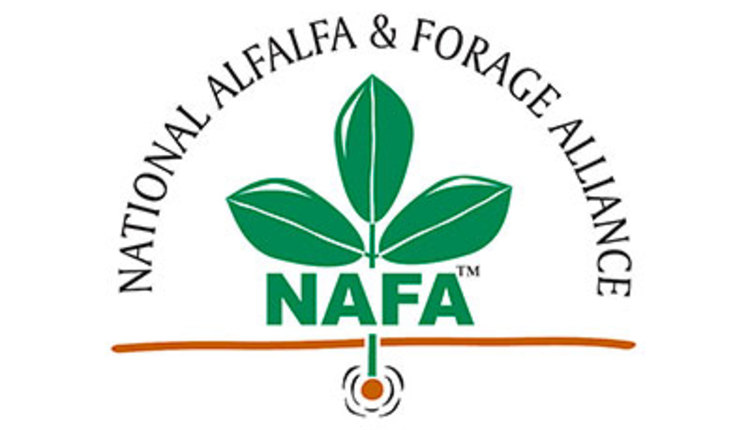This item has been supplied by a forage marketer and has not been edited, verified or endorsed by Hay & Forage Grower.

The National Alfalfa & Forage Alliance established the Alfalfa Checkoff, also known as the U.S. Alfalfa Farmer Research Initiative (USAFRI), to facilitate a farmer-funded program to advance industry research. NAFA’s Alfalfa Checkoff funds alfalfa-related research to help drive innovation and profitability in the alfalfa industry and to support public research into alfalfa and alfalfa forage systems.
“The goal of our project was to identify critical relationships between alfalfa yields, management practices, and soil fertility and health indicators, through a management survey that identified farms with high alfalfa yields and the production practices they used,” said Principal Investigator Nicole Tautges, Agroecology Program Director at the Michael Fields Agricultural Institute. “We felt a better understanding of common management practices, especially on high-yielding operations, and key differences among alfalfa farms, could help to reverse the recent declining trends of alfalfa production and reinvigorate the perception of alfalfa as a highly productive and efficient crop.”
After the analysis of all the variables associated with higher productivity of alfalfa, the study found the management practices that maximized alfalfa yields most in this study were a greater number of cuts per season, manure application, and the use of potassium (K) and sulfur (S) in the first year, suggesting that nutrient application in the establishment year is positively associated with greater alfalfa yields throughout the life of the stand.
Additionally, strong positive relationships emerged between soil carbon pools (soil organic matter and permanganate oxidizable or active carbon) and critical soil components for alfalfa growth, including pH, K, S, calcium, and cation exchange capacity (CEC). Furthermore, soil microorganisms showed potential positive associations with SOM, highlighting their role in maintaining healthy soils.
Tautges added, “Overall, these findings highlight the significance of maintaining a good nutrient supply to ensure higher alfalfa yields throughout the stand's life and suggest that a fertile and healthy soil condition characterized by balanced nutrient availability, active microbial communities, and positive interactions among soil components, can provide a favorable soil environment for alfalfa productivity.”
For a full copy of the project’s final report, located on NAFA’s Alfalfa Checkoff Final Reports page, click here. A handy two-page summary can be found by clicking here.

